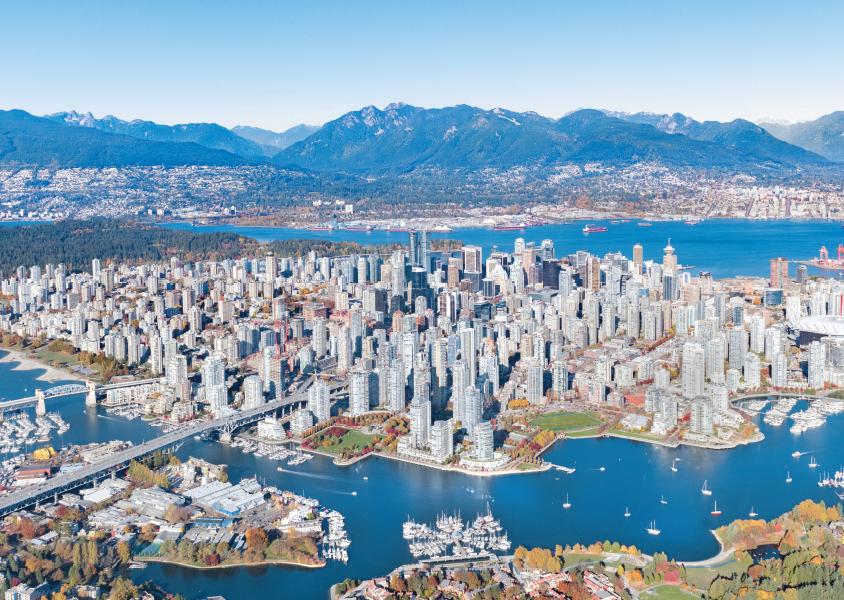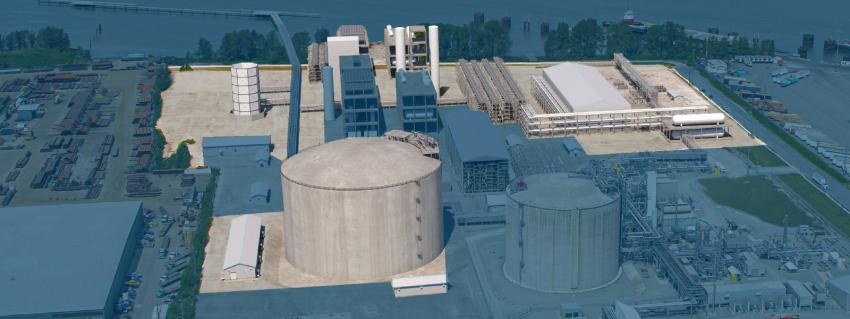About the project

The increased storage capacity from the Tilbury Phase 2 LNG Expansion will strengthen the resiliency of the Lower Mainland gas system, ensuring we have the energy our customers need during an unplanned event, such as a supply disruption, or emergency. The new larger tank would not only replace the tank that has been in service for more than 50 years, but also allow us to use newer technology to further strengthen system resiliency.
An additional purpose of the project is to meet the market need for LNG as a transportable and storable low-carbon intensity fuel with new liquefaction capacity to support our Clean Growth Pathway to 2050.
The Clean Growth Pathway was developed to support the province’s CleanBC plan and charts a path for FortisBC to help achieve the province’s climate action goal of an 80 per cent greenhouse gas (GHG) emissions reduction by 2050. In the future, the added liquefaction capacity provided by Tilbury Phase 2 will help customers lower their carbon footprint and support the transition from higher-carbon energy such as coal, marine oil or diesel to lower-carbon LNG from Tilbury.

The Tilbury Phase 2 Expansion would be one of the largest capital projects in the Lower Mainland, adding $1.7 billion to the economy, $300 million in tax revenue to local government during construction and about $280 million in tax revenue during operation. The project would create more than 6,000 direct, full-time equivalent jobs during construction and 100 during operation, and would have a strong focus on Indigenous and local employment.
The Tilbury Phase 2 LNG Expansion could fuel a new generation of LNG-powered vessels to displace the use of marine fuel oil in the Vancouver region.
Refined project design

We completed early engagement, collecting input from Indigenous groups, stakeholders and the general public to produce a detailed project description that outlines the project and its potential impacts. The BC EAO evaluated the detailed project description and, in January 2022, determined there was enough information about the project to proceed to an environmental assessment. The Impact Assessment Agency of Canada also accepted the detailed project description and agreed to delegate the authority for the environmental assessment to the BC EAO.
Since launching the project in February 2020, FortisBC has refined the design to ensure the project is technically and economically feasible, while still meeting our goals of enhancing the resiliency of our gas system and offering customers LNG to reduce their GHG emissions. As a result of this work, we’ve reduced the proposed capacity of the project, as follows:
- The proposed storage capacity has been reduced 12 per cent to 142,400 cubic metres.
- The proposed liquefaction capacity has been reduced 28 per cent to 2.5 million tonnes per year.
The input we received during early engagement helped us refine our project design. We look forward to continuing to gather input from Indigenous communities and the public on the project.
Comment period and open house

After the public comment period closes, feedback on the draft Process Order and Regulatory Coordination Plan will be incorporated into the final versions.
For the latest project information, bookmark our project updates page and subscribe to our newsletter.
We’re committed to continuing engagement with the local community, including opportunities for dialogue throughout these regulatory processes.
¹ Tilbury Phase 2 LNG Expansion project, detailed project description, pages 2–4



